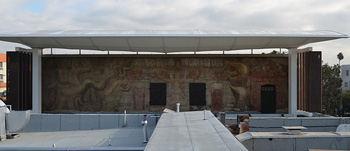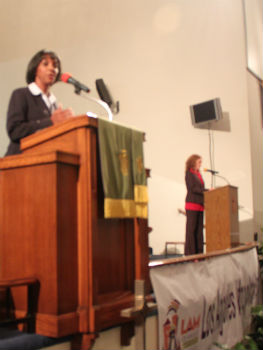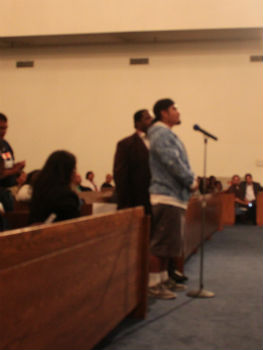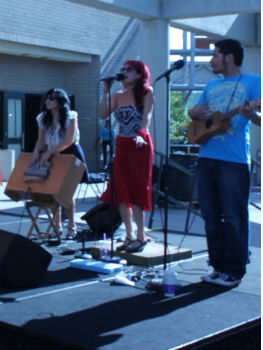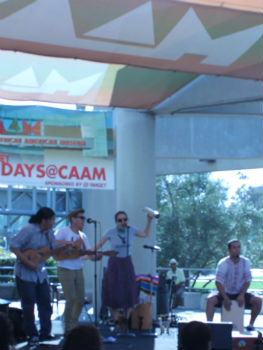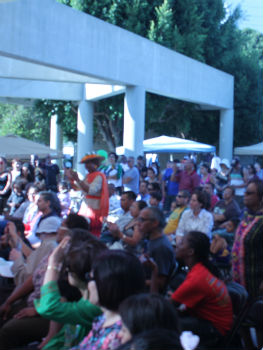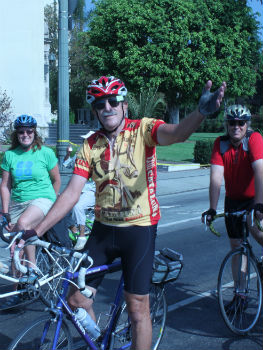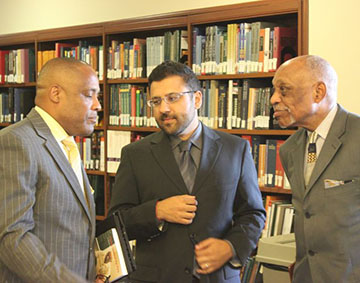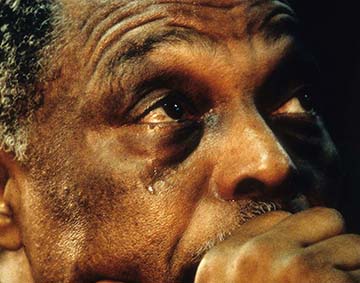By Emmanuel Martinez and Melissa Runnels
Listen to an audio story from Annenberg Radio News
Members of the Bus Riders’ Union, Beverly Hills Unified School District, the Crenshaw Subway Coalition and other groups held a small rally Tuesday at the corner of Crenshaw and Slauson to protest Measure J.
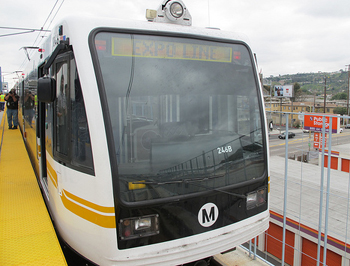 />The measure, which is on the November ballot, would extend the half-cent county sales tax until 2069 and generate $90 million for the Metropolitan Transit Authority (MTA). Sun-Young Yang, of the Bus Riders’ Union, sees Measure J as a $90 million imposition that won’t improve the bus system she depends on: “MTA has actually no plans to expand bus service and in fact they plan to raise fares and cut bus service.”
/>The measure, which is on the November ballot, would extend the half-cent county sales tax until 2069 and generate $90 million for the Metropolitan Transit Authority (MTA). Sun-Young Yang, of the Bus Riders’ Union, sees Measure J as a $90 million imposition that won’t improve the bus system she depends on: “MTA has actually no plans to expand bus service and in fact they plan to raise fares and cut bus service.”
Yang also believes MTA has already failed to deliver on promises regarding the recent light-rail expansion. “The rail lines that they have built out so far did not deliver half of the ridership that they promised. When you have $1 billion per-mile price tag, that means we should get ridership that we see in Seoul, Korea, and other metropolises that have not a thousand riders, but millions of riders,” she said.
The rail expansion is a touchy subject for Damien Goodmon of the Crenshaw Subway Coalition. Goodmon says MTA simply cannot be trusted. “ This is not an agency that plans well. This is not an agency that responds well to community concerns.”
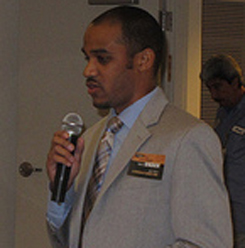 File photo: Damien Goodmon File photo: Damien Goodmon |
Measure J would extend Measure R—a similar measure passed in 2008. Goodmon believes MTA’s record since then speaks for itself. “We passed Measure R just four years ago and in that period of time, they have ignored the concerns of a cross section of community groups, from the Boyle Heights to Baldwin Hills to Crenshaw to the Bus Riders’ Union,” he said.
However, it’s difficult to ignore the success of Measure R. MTA completed the extension of the Orange Line in three years and also started two light-rail projects.
If Measure J is approved, the 15 projects already in the works won’t necessarily get stuck in neutral. The tax extension could jumpstart work on projects like the Subway to the Sea, more soundwall construction, and improvements to the 5, the 405, and the 110 freeways.
The measure needs a two-thirds super-majority to pass. Current polling shows 67 percent in favor, 27 against—which means approval isn’t guaranteed. With about three weeks before the election, the tide could shift either way.









 Tourists taking pictures in front of the White House that it is illuminated pink in honor of cancer victims. Official White House Photo by Sonya N. Herbert. Oct 1, 2012
Tourists taking pictures in front of the White House that it is illuminated pink in honor of cancer victims. Official White House Photo by Sonya N. Herbert. Oct 1, 2012 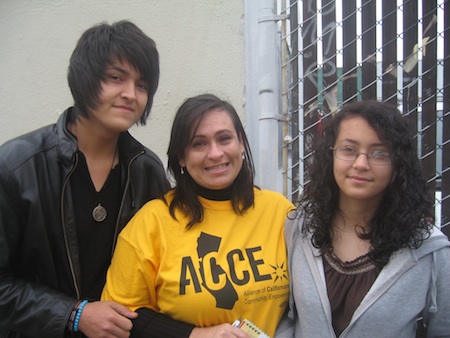 Martha Sánchez with her children, Gonzalo and Catherine Romero.
Martha Sánchez with her children, Gonzalo and Catherine Romero. 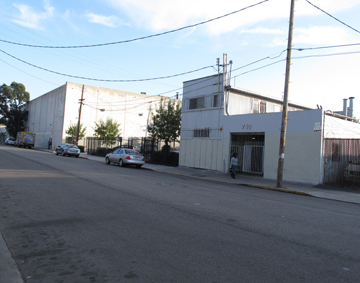 Palace Plating plant at South San Pedro Street and E. 30th Street.
Palace Plating plant at South San Pedro Street and E. 30th Street. 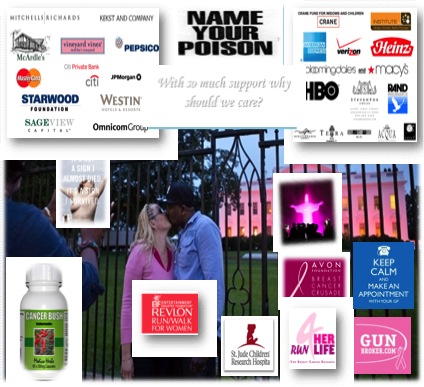
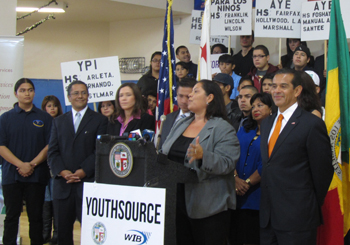 Mayor Antonio Villaraigosa unveiled 13 new YouthSource Centers on Friday with four of them located in South Los Angeles, and tasked with the goal of getting high school dropouts to finish their education.
Mayor Antonio Villaraigosa unveiled 13 new YouthSource Centers on Friday with four of them located in South Los Angeles, and tasked with the goal of getting high school dropouts to finish their education.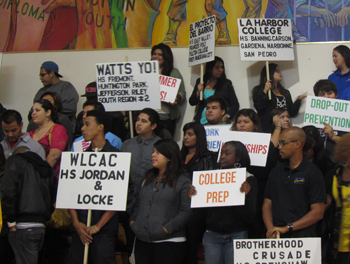 There were seven planning areas such as South L.A., and within those areas are one or several YouthSource centers. Fong said each center is operated by a non-profit organization.
There were seven planning areas such as South L.A., and within those areas are one or several YouthSource centers. Fong said each center is operated by a non-profit organization.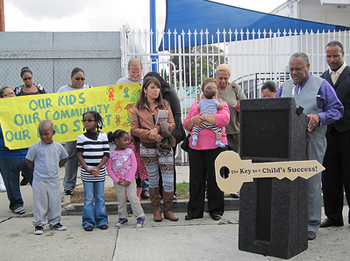 Ke-Lonze used to be a student at a Head Start preschool in Compton. But this year, things are a little different. His school is one of 21 schools in South LA that are under new management this year.
Ke-Lonze used to be a student at a Head Start preschool in Compton. But this year, things are a little different. His school is one of 21 schools in South LA that are under new management this year.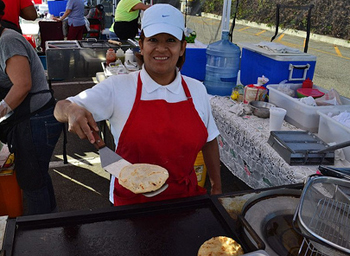 Street vendors hawking fresh fruit and tamales from push carts are as much a part of LA as sunshine and beaches. But it’s actually a misdemeanor to sell food, or anything for that matter, on public sidewalks.
Street vendors hawking fresh fruit and tamales from push carts are as much a part of LA as sunshine and beaches. But it’s actually a misdemeanor to sell food, or anything for that matter, on public sidewalks.